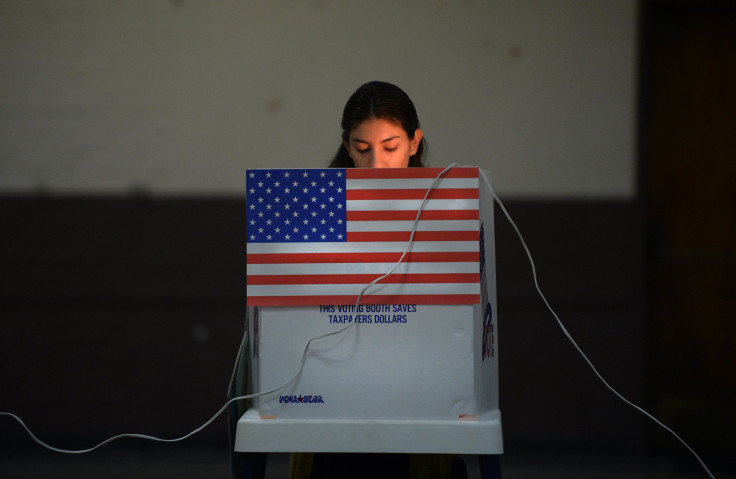Election 2016: Republican Midterm Wins Don't Mean The GOP Is Set For 2016 Presidential Race

The dramatic, across-the-board victory engineered by Republicans in Tuesday’s elections would seem to bode well for the party’s chance to capture the White House in 2016. The GOP took full control of Congress, flipped at least four governor's offices from blue to red, and prompted much talk of a resurgent Republican movement following years of frustration as an opposition party.
Not so fast. A more careful look at the returns significantly complicates the narrative that an American electorate, which recently tilted Democratic, has since shifted back to the Republican fold.
In fact, the 2014 election results appear to say more about who did not vote than who did: Younger voters and minority communities -- two pillars of the Democratic coalition that twice elected Barack Obama -- stayed home in large numbers, as is typical during a midterm election. If trends from the last two presidential elections hold, those same groups are likely to be far more energized during the next White House campaign, making Tuesday's results of limited value in predicting the dynamic that will play out in 2016.
If anything, data from the midterms reveals that Republicans could face a steeper climb than usual as the party sets its sights on the White House. Exit polls showed that Republicans actually got a smaller percentage of the female vote on Tuesday than they did in the 2010 midterms, even as many of their highest profile candidates tried to moderate their image on issues like abortion and contraception.
If that trend holds -- another decline in women supporting Republicans -- the GOP could find itself more reliant than ever on white males, the one slice of the American electorate on which the GOP has a lock. (Almost two-thirds of that cohort supported Republicans on Tuesday.) And the kinds of policies and campaigns that cater effectively to a white male base are likely to further alienate the voters who are increasingly decisive in presidential races -- young, minority and female.
Recent national elections have been defined by a basic demographic shift that many experts still see as operative: The country is growing markedly less white. According to data compiled by the Pew Research Center, the United States is on track to become a majority-minority population in the next three decades.
Minority voters -- particularly Latinos and African Americans -- predominantly vote Democratic. Younger voters also lean toward Democrats and are mobilized by stances that tend to be linked with the party, such as defending abortion rights, embracing same-sex marriages, and acknowledging and addressing the threats of climate change.
Pollsters assume that these established demographic trends will continue and tend to favor Democrats. Republicans can counteract this built-in Democratic advantage by influencing turnout. And this, Democrats argue, is the real point of the restrictive voter identification laws that Republicans have turned to as a fix for supposed voter fraud: It's about depressing minority participation at the polls.
Feeling cynical about politics in general, as voters clearly did during the recent campaign cycle, also tends to lower turnout -- particularly among young voters, which works to the GOP’s advantage.
This sort of swing is essentially what happened in 2010, the first midterm after Obama was elected president. Passionate voters under 30 had helped push Obama into office. But, two years later, the share of the electorate comprising of non-white voters dropped by 3 percentage points, and the share of 18-29 year olds dropped by 6 percentage points. In that midterm election, those groups still voted Democratic, but by smaller margins.
Did those 2010 results presage a new Republican era? No: 2012 brought back young and minority voters in large numbers, giving Obama his second term.
As it happens, exit polls from the 2010 midterm elections look strikingly similar to the 2014 results.
Exit polls from House of Representatives races in 2010 showed a national electorate made up of 35 percent self-identified Democrats, 35 percent Republicans and 29 percent independents. Exit polls from Tuesday's polls yielded a nearly identical breakdown. Those same polls showed the parties maintaining roughly the same level of loyalty among their own voters as in 2012. The only major difference is that Democrats in 2014 actually improved their performance by 5 percentage points among independent voters.
In the last two presidential elections, though, the numbers tell a different story. Democrats enjoyed a substantial turnout advantage. In 2008, exit polls showed that 40 percent of the electorate described themselves as Democrats while just 33 percent identified as Republicans. In 2012, Democrats similarly held a 38-32 turnout advantage.
Turnout is where demographics become decisive. Exit polls from Tuesday's elections showed that 75 percent of the electorate was white, 12 percent was African-American and 8 percent was Latino -- a breakdown roughly the same as during the 2010 midterms, when Democrats were also trounced.
But again, presidential races draw a different electorate. In 2012, 72 percent of voters were white -- a drop of three percentage points from the midterms two years earlier -- while 13 percent were African-American and 10 percent were Latino.
Latino voters skew very differently in statewide and district races as opposed to presidential contests, when they trend far more Democratic. Latinos gave House Democratic candidates 60 percent of the vote in 2010 and 63 percent in 2014, far less than their support for Democrats in presidential campaigns -- 70 percent in 2008 and 68 percent in 2012.
Gender and age weigh into the equation with similar results. In recent years, the electorate during presidential races has been younger and more female than during midterm races.
If Republicans are looking for a positive message to take away from this midterm, it’s that they can probably look ahead happily to 2018. Midterms are their meat: playing to their strengths and lessening the impact of their demographic weaknesses. But they shouldn’t get overly excited about 2016.
© Copyright IBTimes 2024. All rights reserved.












